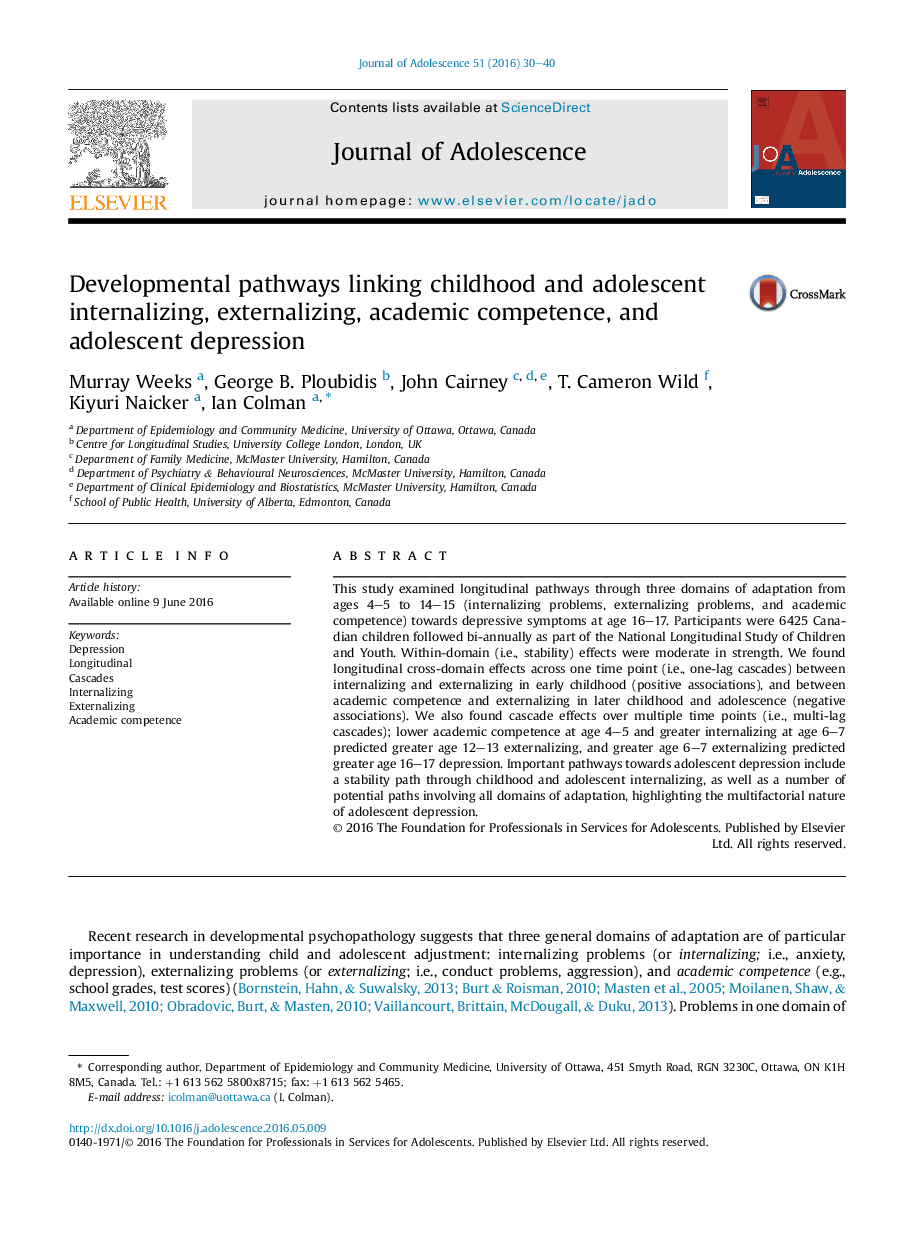| Article ID | Journal | Published Year | Pages | File Type |
|---|---|---|---|---|
| 880548 | Journal of Adolescence | 2016 | 11 Pages |
This study examined longitudinal pathways through three domains of adaptation from ages 4–5 to 14–15 (internalizing problems, externalizing problems, and academic competence) towards depressive symptoms at age 16–17. Participants were 6425 Canadian children followed bi-annually as part of the National Longitudinal Study of Children and Youth. Within-domain (i.e., stability) effects were moderate in strength. We found longitudinal cross-domain effects across one time point (i.e., one-lag cascades) between internalizing and externalizing in early childhood (positive associations), and between academic competence and externalizing in later childhood and adolescence (negative associations). We also found cascade effects over multiple time points (i.e., multi-lag cascades); lower academic competence at age 4–5 and greater internalizing at age 6–7 predicted greater age 12–13 externalizing, and greater age 6–7 externalizing predicted greater age 16–17 depression. Important pathways towards adolescent depression include a stability path through childhood and adolescent internalizing, as well as a number of potential paths involving all domains of adaptation, highlighting the multifactorial nature of adolescent depression.
